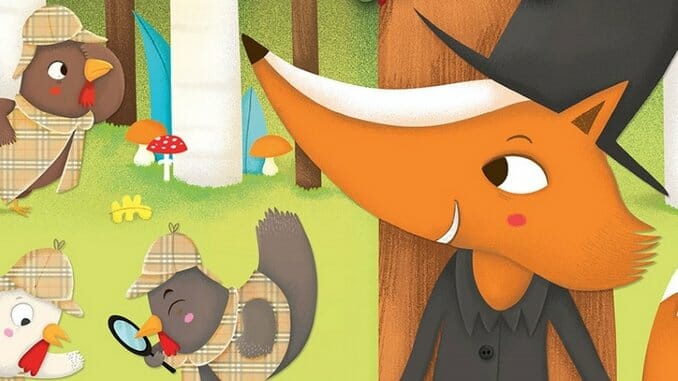5 Great Board Games for Young Children

As an addendum to his recent review of Dragomino, board game critic Keith Law recommends the best board games for the youngest players.
I admit I haven’t played as many good board games for kids aged 6 and younger than I have games for older players, especially since that niche is even newer than the Eurogame craze itself, but I’ve tried a handful and here are some I regularly recommend to readers.
5. Friends of a Feather

Friends of a Feather is the best for the youngest players; I have played this with a 3-year-old, more than once, and they were always able to play along. There’s a deck of feather cards in four colors, as well as some wilds showing all the colors. Each player has a paddle into which they will insert feathers as they gather them, with the goal of collecting as many feathers of their own color—including wilds—as they can. You can take from the four on display, or trade in two from your hand. While there’s a winner, it’s the kind of game you can just play for the fun of it, especially since the scores at the end will all be quite close.
4. Chicken Cha Cha Cha

The feather theme in these first two games is a coincidence. A game of memory (or Concentration, if you’re of a certain age), Chicken Cha Cha Cha has two sets of tiles—a dozen octagonal ones, and two dozen ovals. Each octagon shows a picture of something related to chickens, such as chicks, feathers, eggs, or worms. The same image appears on two ovals. The ovals are all placed face-down at the start of the game, while the octagons form a face-up ring around the ovals. On your turn, you will move your chicken to the next octagon, and then try to uncover both ovals showing that image. If you find the match, you go again; if not, your turn ends. Each player starts with one tail feather in their chicken, and if you pass another player on the track, you get to swipe their feather. If you collect all players’ feathers, you win. Although the box suggests this game is good for kids aged 4 and up, I think the memory aspect of it asks too much of players that young, and that 6+ is probably a better guide.
3. Dragomino

This game is great for kids as young as 4, and more than good enough to keep older players engaged for its brief duration. As I wrote in my review, “Dragomino reimagines the original game in an entirely new way, keeping the domino shapes and the terrain-matching elements of Kingdomino, removing what would likely be the hardest part for a child to understand, and adding a set of rewards with a little bit of luck to help level the playing field between older and younger players. It’s a model for other designers who want to take their more sophisticated games downstream to let gamers play with their youngest children, siblings, or relatives.”
2. Outfoxed

A brilliant cooperative deduction game suitable for players as young as 5, Outfoxed mixes in some dice-rolling and the fun of moving your pieces around the board, asking players to work together to figure out which fox is the culprit before the fox token manages to traverse the board. The game has a clever device into which you’ll place clue tokens to see if the culprit has the particular item or piece of clothing you’ve uncovered, after which you can eliminate some of the visible (face-up) suspects around the board. I also like Hoot Owl Hoot!, from the same designer as the Spiel-winning game Qwirkle, for another cooperative game for younger players.
1. Ticket to Ride—First Journey

I think Days of Wonder did a masterful job with this one, extending their most popular line for the younger crowd with two games, one for the USA and one for Europe. These games borrow all the main mechanics from the original Ticket to Ride games—collect train cards in different colors and match them to place trains on tracks between cities on the map—but simplifies everything with shorter routes to complete, fewer cities, and a shorter game overall. There’s also a coast-to-coast bonus if you connect the east and west coasts in the U.S. game. And it would be a very easy matter to graduate a young player from the First Journey game to the main Ticket to Ride, perhaps stopping with one of the three small Ticket to Ride games (New York, London, and the new Amsterdam game) in between.
Keith Law is the author of The Inside Game and Smart Baseball and a senior baseball writer for The Athletic. You can find his personal blog the dish, covering games, literature, and more, at meadowparty.com/blog.